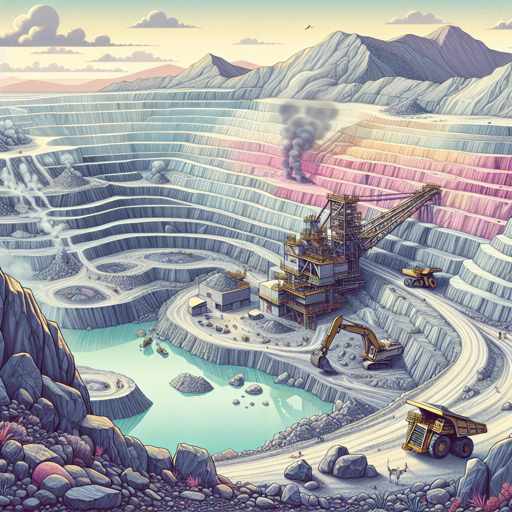The Environmental Impact of Lithium Mining
Unraveling the environmental consequences of lithium mining, a critical component in the renewable energy revolution.

Introduction
In the quest for sustainable energy, lithium has emerged as a critical element. Its high energy density and rechargeable qualities make it ideal for use in electric vehicle batteries and renewable energy storage systems. However, as demand for lithium surges, so does the need for lithium mining, raising significant environmental concerns.
Understanding Lithium Mining
Lithium mining involves extracting the metal from various sources, primarily from hard rock mines and brine deposits. The extraction process is water-intensive, requiring large volumes of water to obtain lithium from these sources.
In addition, lithium mining can result in soil degradation and air contamination. The extraction process often involves the use of chemicals that can pollute air and water, affecting biodiversity and human health.
Environmental Consequences of Lithium Mining
Water Scarcity
Lithium extraction, particularly from brine deposits, demands substantial water resources. This can lead to water scarcity in regions where lithium reserves are abundant, such as the Atacama Desert in Chile.
| Region | Estimated Water Consumption per Ton of Lithium |
|---|---|
| Atacama Desert, Chile | 500,000 gallons |
| Greenbushes, Australia | 150,000 gallons |
Soil Degradation and Deforestation
The process of lithium mining can cause soil degradation and deforestation. The removal of vegetation for mining operations can lead to soil erosion and loss of habitats for many species.
Air and Water Pollution
Lithium mining can release harmful chemicals into the air and water. These chemicals can harm local ecosystems and potentially contaminate drinking water sources.
“As we strive to combat climate change with green technologies, we must also consider the environmental cost of obtaining the raw materials,” says environmental scientist Dr. Jane Goodall.
The Path Forward: Sustainable Lithium Mining
Given the environmental impact of lithium mining, it is necessary to adopt sustainable practices. Companies are exploring more efficient extraction methods that use less water and fewer chemicals. Additionally, recycling lithium from used batteries can reduce the need for new mining.
Conclusion
The transition to renewable energy is crucial for the future of our planet. However, we must balance this with the environmental impacts of obtaining the necessary materials. By understanding and addressing the environmental consequences of lithium mining, we can pave the way for a truly sustainable energy revolution.
Further Reading: Lithium Mining and Its Impacts on the Environment
This article provides an overview of the environmental impacts of lithium mining, including water scarcity, soil degradation, deforestation, and pollution. It also highlights the need for sustainable mining practices and recycling.